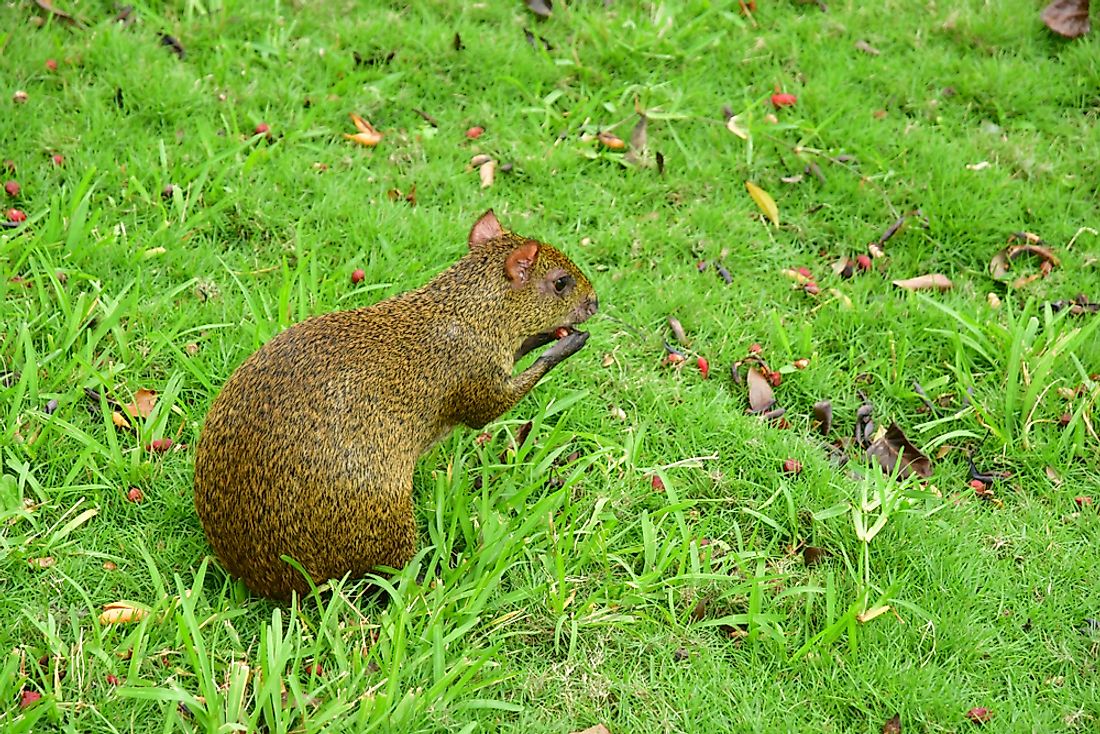Mexico's Critically Endangered Mammals

Mexico is located in the southern reaches of the North American continent. The nation has an expansive landscape that covers an area of 761,600 square miles. Mexico’s vast landscape is home to a wide range of flora and fauna. The nation is classed among the 17 mega-diverse countries of the world. Mexico has the highest diversity of reptile species in the world and the world’s second largest diversity of mammalian species. Over 26,000 plant species are found in Mexico. Some of the plants and animals in Mexico are listed as endangered species. Endangered animals include Vaquitas, the Big pocket gopher, and the Chiapan climbing rat.
Vaquita (Phocoena sinus)
The Vaquita is a rare marine species only found in the Gulf of California in Mexico. Their total population was estimated at 60 vaquitas as of May of 2016. A vaquita has dark rings around its eyes and patches on its lips. It grows up to an average length of 135 centimeters. The vaquita feeds on sea trout, croakers, and grunts. Its estimated lifespan is 20 years in an ideal environment. It inhabits shallow waters along the shoreline. The marine mammal reaches sexual maturity between the ages of 3 to 6 years. The species has experienced drastic population decline in the last decade. Vaquita is ranked in the top 100 most endangered mammals in the world. Its existence is threatened by illegal fishing using gill-nets, water pollution, and habitat destruction. Conservation agencies have taken steps in preserving the vaquita including banning gill-net fishing in the areas where the animal lives.
Big Pocket Gopher (Orthogeomys lanius)
The Big pocket gopher (Orthogeomys lanius) is a rodent species native to Mexico. It inhabits the mountainside region in Veracruz at an altitude of 1,300 meters. The rodent has an average body length of 220 millimeters and a 75-millimeter tail length. It weighs between 215 and 550 grams. Big pocket gopher is a critically endangered mammal. Its population has dropped massively due to loss of habitat to agriculture. Furthermore, Mexican farmers view the rodent as a pest that destroys crops and therefore use pesticides to kill the rodent. The rodent needs to be protected to ensure it does not become extinct.
Angel Island Mouse (Peromyscus guardia)
The Angel Island mouse (Peromyscus guardia) is a rodent endemic to Mexico. It is mainly found on the island of Ángel de la Guarda and in the northern Gulf of California. The rodent has pale gray fur and an average body length of 19 to 22 centimeters and a tail length of 9 to 12 centimeters. In the 1960s, the Angel Island mouse was in abundance in the Mexican Islands but currently, the rodent is a rare species. It has come under threat from feral cats and other aggressive rodents. Angel Island mouse is on the critically endangered species list. The species requires urgent protection to stop its extinction.
Chiapan Climbing Rat (Tylomys bullaris)
The Chiapan climbing rat (Tylomys bullaris) is a rat whose native home is in Mexico. The Chiapan climbing rat inhabits tropical deciduous forests particularly in Tuxtla Gutierrez, in Mexico. It resembles the black rat, and only it is larger in size. Its body length ranges from 170 to 250 millimeters and its tail from 200 to 250 millimeters. It has a brownish fur cover, and its back feet are modified for climbing. The rat’s existence is threatened by destruction of its natural habitat. Urban development and agriculture have led to the loss of the creature’s habitat. The Chiapan climbing rat is considered to be on the verge of extinction.
Conservation of Mammals in Mexico
Mexico accommodates animals of all shapes, colors, and habitat preferences. Some of the animals have come under threat from human interference, climate change, and the introduction of competing species. A significant number of mammals are classified as critically endangered due to the threats. Mexican authorities need to establish protected areas for the endangered species to survive. Additionally, preservation measures such as captive breeding need to be taken for the critically endangered species.
Mexico's Critically Endangered Mammals
| Critically Endangered Mammals of Mexico | Scientific Name |
| Alcorn's pocket gopher | Pappogeomys alcorni |
| Angel Island mouse | Peromyscus guardia |
| Big pocket gopher | Orthogeomys lanius |
| Burt's deer mouse | Peromyscus caniceps |
| Chiapan climbing rat | Tylomys bullaris |
| Chinanteco deer mouse | Habromys chinanteco |
| Cozumel harvest mouse | Reithrodontomys spectabilis |
| Cozumel Island raccoon | Procyon pygmaeus |
| Delicate deer mouse | Habromys delicatulus |
| Dickey's deer mouse | Peromyscus dickeyi |
| False canyon mouse | Peromyscus pseudocrinitus |
| Ixtlán deer mouse | Habromys ixtlani |
| Margarita Island kangaroo rat | Dipodomys margaritae |
| Mexican agouti | Dasyprocta mexicana |
| Nelson's small-eared shrew | Cryptotis nelsoni |
| Nelson's woodrat | Neotoma nelsoni |
| Perote mouse | Peromyscus bullatus |
| Puebla deer mouse | Peromyscus mekisturus |
| San Cristobal shrew | Sorex stizodon |
| San Esteban Island mouse | Peromyscus stephani |
| San Jose Island kangaroo rat | Dipodomys insularis |
| San Lorenzo mouse | Peromyscus interparietalis |
| San Quintin kangaroo rat | Dipodomys gravipes |
| Sclater's shrew | Sorex sclateri |
| Slevin's mouse | Peromyscus slevini |
| Tropical pocket gopher | Geomys tropicalis |
| Tumbala climbing rat | Tylomys tumbalensis |
| Vaquita | Phocoena sinus |
| Zempoaltepec deer mouse | Habromys lepturus |











